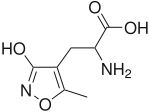Effects

Psychoactive drugs operate by temporarily affecting a person's neurochemistry, which in turn causes changes in a person's mood, cognition, perception and behavior. There are many ways in which psychoactive drugs can affect the brain. Each drug has a specific action on one or more neurotransmitter or neuroreceptor in the brain.
Drugs that increase activity in particular neurotransmitter systems are called agonists. They act by increasing the synthesis of one or more neurotransmitters, by reducing its reuptake from the synapses, or by mimicking the action by binding directly to the postsynaptic receptor. Drugs that reduce neurotransmitter activity are called antagonists, and operate by interfering with synthesis or blocking postsynaptic receptors so that neurotransmitters cannot bind to them.
Exposure to a psychoactive substance can cause changes in the structure and functioning of neurons, as the nervous system tries to re-establish the homeostasis disrupted by the presence of the drug (see also, neuroplasticity). Exposure to antagonists for a particular neurotransmitter can increase the number of receptors for that neurotransmitter or the receptors themselves may become more responsive to neurotransmitters; this is called sensitization. Conversely, overstimulation of receptors for a particular neurotransmitter may cause a decrease in both number and sensitivity of these receptors, a process called desensitization or tolerance. Sensitization and desensitization are more likely to occur with long-term exposure, although they may occur after only a single exposure. These processes are thought to play a role in drug dependence and addiction. Physical dependence on antidepressants or anxiolytics may result in worse depression or anxiety, respectively, as withdrawal symptoms. Unfortunately, because clinical depression (also called major depressive disorder) is often referred to simply as depression, antidepressants are often requested by and prescribed for patients who are depressed, but not clinically depressed.
Affected neurotransmitter systemsedit
The following is a brief table of notable drugs and their primary neurotransmitter, receptor or method of action. Many drugs act on more than one transmitter or receptor in the brain.
| Neurotransmitter/receptor | Classification | Examples |
|---|---|---|
 |
Cholinergics (acetylcholine receptor agonists) | arecoline, nicotine, piracetam |
| Muscarinic antagonists (acetylcholine receptor antagonists) | scopolamine, benzatropine, dimenhydrinate, diphenhydramine, doxylamine, atropine, quetiapine, olanzapine, most tricyclics | |
| Nicotinic antagonists (acetylcholine receptor antagonists) | memantine, bupropion | |
 |
Adenosine receptor antagonists | caffeine, theobromine, theophylline |
 |
Dopamine reuptake inhibitors (DRIs) | cocaine, bupropion, methylphenidate, St John's wort, and certain TAAR1 agonists like amphetamine, phenethylamine, and methamphetamine |
| Dopamine releasers | Cavendish bananas, TAAR1 agonists like amphetamine, phenethylamine, and methamphetamine | |
| Dopamine receptor agonists | pramipexole, Ropinirole, L-DOPA (prodrug), memantine | |
| Dopamine receptor antagonists | haloperidol, droperidol, many antipsychotics (e.g., risperidone, olanzapine, quetiapine) | |
| Dopamine receptor partial agonists | LSD, aripiprazole | |
 |
GABA reuptake inhibitors | tiagabine, St John's wort, vigabatrin, deramciclane |
| GABA receptor agonists | ethanol, niacin, barbiturates, diazepam, clonazepam, lorazepam, temazepam, alprazolam and other benzodiazepines, zolpidem, eszopiclone, zaleplon and other nonbenzodiazepines, muscimol, phenibut | |
| GABA receptor antagonists | thujone, bicuculline | |
 |
Norepinephrine reuptake inhibitors | St John's wort, most non-SSRI antidepressants such as amoxapine, atomoxetine, bupropion, venlafaxine, quetiapine, the tricyclics, methylphenidate, SNRIs such as duloxetine, venlafaxine, cocaine, tramadol, and certain TAAR1 agonists like amphetamine, phenethylamine, methamphetamine. |
| Norepinephrine releasers | ephedrine, PPA, pseudoephedrine, amphetamine, phenethylamine, methamphetamine | |
| Norepinephrine receptor agonists | clonidine, guanfacine, phenylephrine | |
| Norepinephrine receptor antagonists | carvedilol, metoprolol, mianserin, prazosin, propranolol, trazodone, yohimbine, olanzapine | |
 Serotonin |
Serotonin receptor agonists | methylphenidate, LSD, psilocybin, mescaline, DMT |
| Serotonin reuptake inhibitors | most antidepressants including St John's wort, tricyclics such as imipramine, SSRIs such as fluoxetine, sertraline and citalopram, and SNRIs such as duloxetine and venlafaxine, cocaine, tramadol, and certain TAAR1 agonists like amphetamine, tryptamine, and methamphetamine | |
| Serotonin releasers | fenfluramine, MDMA (ecstasy), tryptamine | |
| Serotonin receptor antagonists | ritanserin, mirtazapine, mianserin, trazodone, cyproheptadine, memantine, atypical antipsychotics (e.g., risperidone, olanzapine, quetiapine) | |
 AMPA receptor |
AMPA receptor positive allosteric modulators | aniracetam, CX717, piracetam |
| AMPA receptor antagonists | kynurenic acid, NBQX, topiramate | |
 Cannabinoid receptor |
Cannabinoid receptor agonists | JWH-018 |
| Cannabinoid receptor partial agonists | Anandamide, THC, cannabidiol, cannabinol | |
| Cannabinoid receptor inverse agonists | Rimonabant | |
| Anandamide reuptake inhibitors | LY 2183240, VDM 11, AM 404 | |
| FAAH enzyme inhibitors | MAFP, URB597, N-Arachidonylglycine | |
| Melanocortin receptor agonists | bremelanotide | |
| NMDA receptor antagonists | ethanol, ketamine, PCP, DXM, Nitrous Oxide, memantine | |
| GHB receptor agonists | GHB, Amisulpride, T-HCA | |
| Sigma-1 receptor agonists | cocaine, DMT, DXM, fluvoxamine, ibogaine, opipramol, PCP, methamphetamine | |
| Sigma-2 receptor agonists | methamphetamine | |
| μ-opioid receptor agonists | morphine, heroin, oxycodone, codeine | |
| μ-opioid receptor partial agonists | buprenorphine | |
| μ-opioid receptor inverse agonists | naloxone | |
| μ-opioid receptor antagonists | naltrexone | |
| κ-opioid receptor agonists | salvinorin A, butorphanol, nalbuphine, pentazocine, ibogaine | |
| κ-opioid receptor antagonists | buprenorphine | |
| H1 histamine receptor antagonists | diphenhydramine, doxylamine, mirtazapine, mianserin, quetiapine, olanzapine, meclozine, dimenhydrinate, most tricyclics | |
| Monoamine oxidase inhibitors (MAOIs) | phenelzine, iproniazid, tranylcypromine, selegiline, rasagiline, moclobemide, isocarboxazid, Linezolid, benmoxin, St John's wort, coffee, garlic | |
| Melatonin receptor agonists | ramelteon | |
| Imidazoline receptor agonists | apraclonidine, clonidine, moxonidine, rilmenidine | |
| Orexin receptor agonists | modafinil | |
| Orexin receptor antagonists | SB-334,867, SB-408,124, TCS-OX2-29, suvorexant |
Comments
Post a Comment